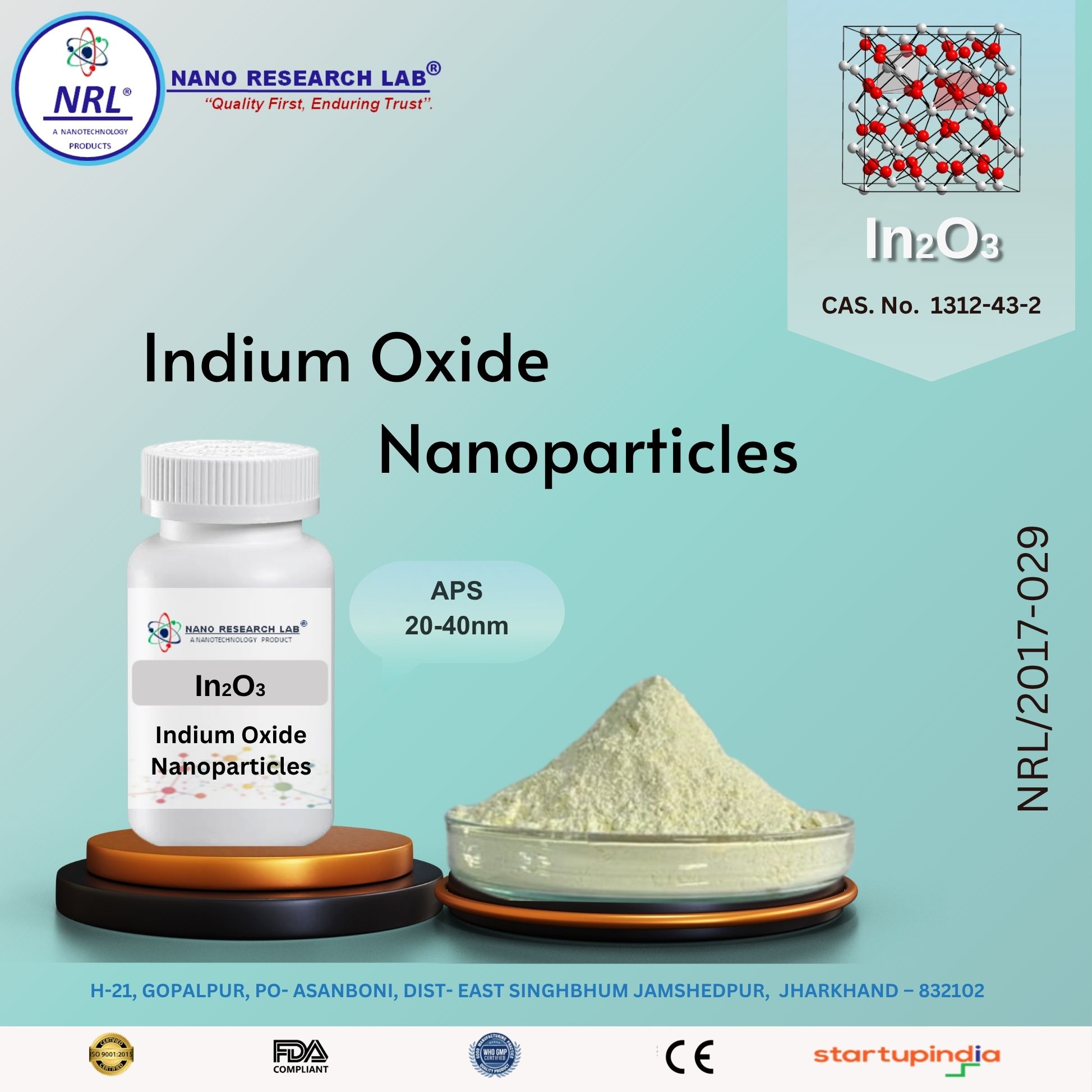
Indium oxide Nanoparticles/Nanopowder (In2O3, 20-40nm, purity 99.5%)
₹4490.00
Indium Oxide Nanoparticles / Nanopowder (In₂O₃, 20–40 nm, Purity 99.5%)
⚙️ Technical Specifications
Property | Specification |
|---|---|
Product Name | Indium Oxide Nanoparticles / Nanopowder |
Chemical Formula | In₂O₃ |
Purity | ≥ 99.5% |
Particle Size | 20–40 nm |
Appearance | Pale yellow to light gray powder |
Crystal Structure | Cubic (Bixbyite) |
Density | 7.18 g/cm³ |
Specific Surface Area (SSA) | 25–50 m²/g |
Melting Point | ~1910°C |
Band Gap | 2.9 eV |
Solubility | Insoluble in water, soluble in acids |
Morphology | Spherical / polycrystalline |
CAS Number | 1312-43-2 |
🌟 Key Features
High purity (≥99.5%) and uniform particle size (20–40 nm)
Excellent optical transparency and electrical conductivity
Wide bandgap semiconductor with stable n-type conductivity
High thermal and chemical stability under operational environments
Strong photocatalytic activity under visible and UV light
Easy to disperse in polymer, ceramic, or glass matrices
Suitable for transparent conductive coatings and sensors
🔬 Applications (in Detail)
1. Transparent Conductive Films (TCOs)
Indium oxide is one of the most important materials for transparent conductive oxides, combining optical transparency with good electrical conductivity.
Used in ITO (Indium Tin Oxide) coatings for touch screens, LCDs, OLEDs, and solar cells.
Provides excellent light transmission and surface conductivity in thin-film coatings.
2. Gas Sensors
In₂O₃ nanoparticles are sensitive to oxidizing and reducing gases due to changes in surface resistance.
Used in sensors for detecting O₂, H₂, CO, NO₂, ethanol, and ammonia.
Widely applied in air quality monitoring, industrial safety, and automotive sensors.
3. Optoelectronic Devices
Due to its wide band gap and stable conductivity, In₂O₃ is ideal for optoelectronic and photonic devices.
Used in photoelectrochemical cells, UV photodetectors, and LEDs.
Serves as a transparent electrode in thin-film transistors (TFTs).
4. Catalysis and Photocatalysis
Indium oxide nanoparticles exhibit strong photocatalytic and catalytic activity, especially under visible light.
Used in CO oxidation, methanol oxidation, and hydrogen generation reactions.
Acts as a photocatalyst for organic pollutant degradation in wastewater treatment.
5. Solar Energy and Fuel Cells
Indium oxide is a critical material for solar energy conversion and fuel cell technologies.
Used in Dye-Sensitized Solar Cells (DSSCs) and photoelectrochemical hydrogen generation.
Serves as an electrocatalyst and transparent conductive substrate in solid oxide fuel cells (SOFCs).
6. Ceramics and Coatings
In₂O₃ nanoparticles improve hardness, optical clarity, and conductivity when incorporated into ceramics and coatings.
Applied as an additive in glass, ceramic glazes, and conductive coatings for anti-static surfaces.
